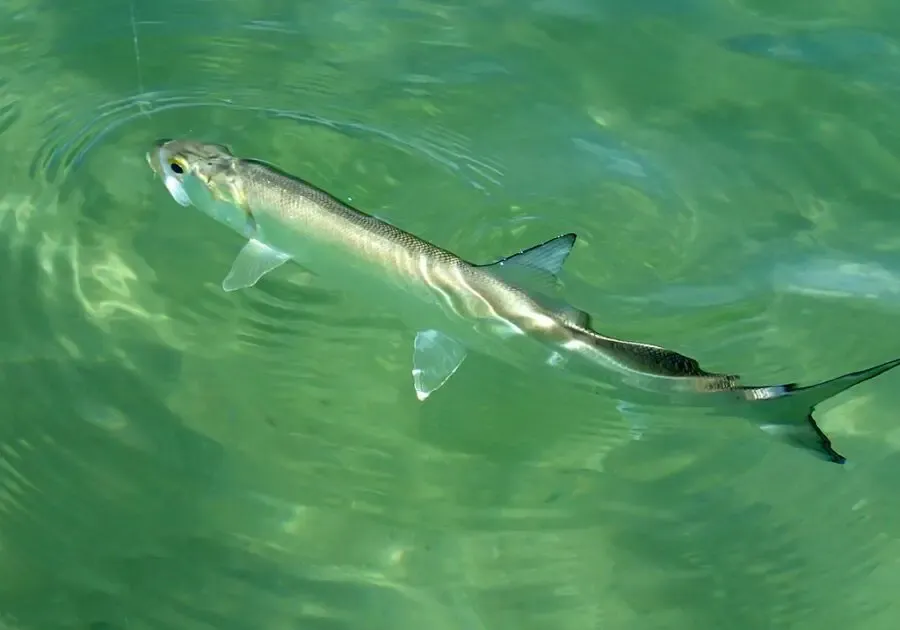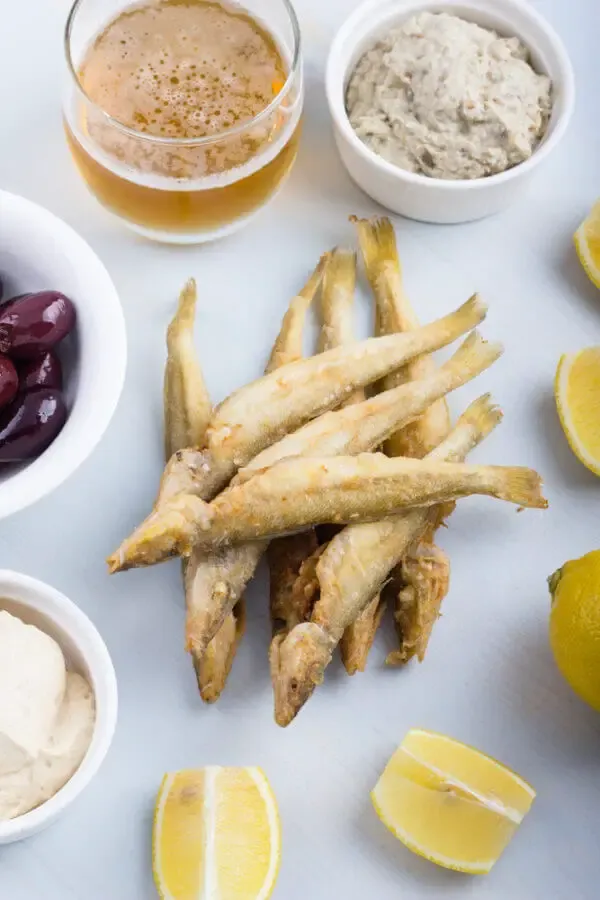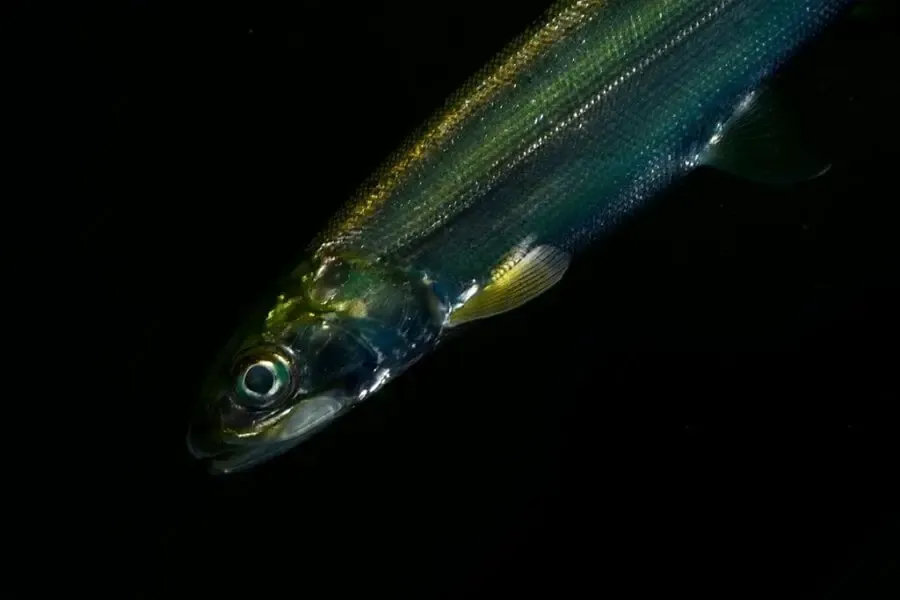The short answer is yes, you can eat a ladyfish. However, it is not considered a highly prized or sought-after fish for culinary purposes.
Is Ladyfish Any Good?
Ladyfish is not typically considered a delicious fish. It has a distinct taste and aroma that some people enjoy, while others find it too strong or fishy.
Ladyfish is known for its soft flesh, and it can be cooked in various ways, including grilling, baking, pan-frying, or smoking. Some people recommend marinating or seasoning ladyfish to reduce its robust fishy taste.
One issue with ladyfish is its soft texture meaning the flesh of this fish tends to become mushy if not cooked properly.
Another issue with ladyfish is the amount of small bones. These tiny bones can be tedious to remove, and their presence can make eating ladyfish more challenging compared to other fish species.
So, if you choose to eat ladyfish, careful filleting and bone removal are recommended.
What Does a Ladyfish Taste Like?
The taste of ladyfish can be described as fishy and oily. The flavor is strong; some people enjoy its distinctiveness, while others find it too intense.
When cooked, ladyfish retains its oily taste, but the intensity can be reduced or balanced by various cooking methods and seasonings. Grilling, baking, pan-frying, or smoking ladyfish can help add a slightly smoky or charred note to its meat.
Marinating ladyfish before cooking can also help to mellow out some of the strong fishy taste.

What Is the Best Way to Cook Ladyfish?
The oil in ladyfish can add some richness and moisture to the flesh, making it a good choice for grilling, baking, or pan-frying methods.
To grill ladyfish fillets, season the fish with herbs, spices, and a bit of olive oil, then place it on a preheated grill over medium-high heat. Cook for a few minutes on each side.
Baking is another simple and convenient way to cook ladyfish. Preheat the oven to around 375°F (190°C). Place the seasoned fish on a baking sheet lined with parchment paper or foil. Bake for about 10-15 minutes.
Pan-frying ladyfish can create a crispy exterior while moistening the flesh. Heat some oil in a skillet over medium heat. Season the fish, then place it in the hot skillet and cook for a few minutes on each side.
You can also try smoking ladyfish or use it to make ceviche.
Ladyfish Fishcake Recipe
Ladyfish fishcakes can be delicious when properly seasoned and cooked. You can make this simple fishcake recipe with any fish.
Ingredients:
- 1 pound (450g) ladyfish fillets, cooked and flaked
- 1/2 cup breadcrumbs
- 1/4 cup finely chopped onion
- 2 cloves garlic, minced
- 2 tablespoons chopped fresh parsley
- 1 tablespoon lemon juice
- 1 teaspoon Dijon mustard
- 1/2 teaspoon Old Bay seasoning (or your preferred seafood seasoning)
- Salt and pepper to taste
- 1 egg, lightly beaten
- Oil for frying
Instructions:
- Combine the cooked and flaked ladyfish fillets in a large bowl with breadcrumbs, chopped onion, minced garlic, fresh parsley, lemon juice, Dijon mustard, Old Bay seasoning, salt, and pepper. Mix well.
- Add the beaten egg to the mixture and stir until everything is evenly combined. The mixture should hold together when squeezed gently.
- Shape the mixture into patties. You can make them small for appetizer-sized fishcakes or larger for main course portions.
- Heat some oil in a skillet over medium heat. Add the fishcakes to the skillet and cook for about 3-4 minutes per side or until golden brown and cooked through.
- Once cooked, transfer the fishcakes to a paper towel-lined plate to drain excess oil.
- Serve the ladyfish fishcakes warm with your favorite dipping sauce or tartar sauce.

Where Can You Catch Ladyfish?
Ladyfish can be found along the Atlantic coast of North America, including the southeastern United States, from Florida up to North Carolina.
They are also found in the Gulf of Mexico, including the coastlines of Texas, Louisiana, Mississippi, Alabama, and Florida.
They swim in estuaries, bays, and nearshore areas.
Why Are Ladyfish Important to the Ecosystem?
Ladyfish play an important role in the ecosystem as a predator and prey species, contributing to the balance and functioning of coastal and estuarine environments.
They feed on crustaceans, and smaller fish, helping to control populations of these organisms. At the same time, ladyfish serve as a food source for sharks, barracuda, and other predatory fish, providing energy and nutrients to support higher trophic levels.
What Other Fish Are Found in the Same Family as the Ladyfish?
Ladyfish pertains to the family Elopidae. Other fish in the same family include tarpons, tenpounders, skipjacks, and bonefish.
What Is the Difference Between a Ladyfish and a Mangrove Snapper?
While ladyfish and mangrove snapper share a few similarities, they are two different species of fish.
Both ladyfish and mangrove snapper are commonly found in coastal and nearshore environments. Both are sought after by recreational anglers for sport fishing.
However, mangrove snapper is typically smaller. Also, they look different. Ladyfish have a slender and elongated body shape with a deeply forked tail. They have a silvery coloration with a greenish or bluish tint on their back. In contrast, mangrove snappers have a more compact and robust body shape, with a slightly forked tail. They have a reddish or grayish coloration.
While ladyfish are often considered trash fish, mangrove snappers are highly regarded as a food fish.


Are Ladyfish Used as Bait?
Yes, ladyfish are used as bait in various types of fishing. Their oily flesh and strong scent make them attractive to a wide range of predatory fish species. Their use as bait is particularly popular in saltwater and coastal waters.
Anglers often use cut pieces of ladyfish as bait to target larger game fish such as snook, tarpon, redfish, and sharks.
Ladyfish can be cut into strips or chunks and used as fresh or frozen bait. It can also be used as live bait, particularly when targeting larger predatory fish. Live ladyfish can be rigged on hooks or used with fishing rigs or techniques like freelining or live bait fishing.



